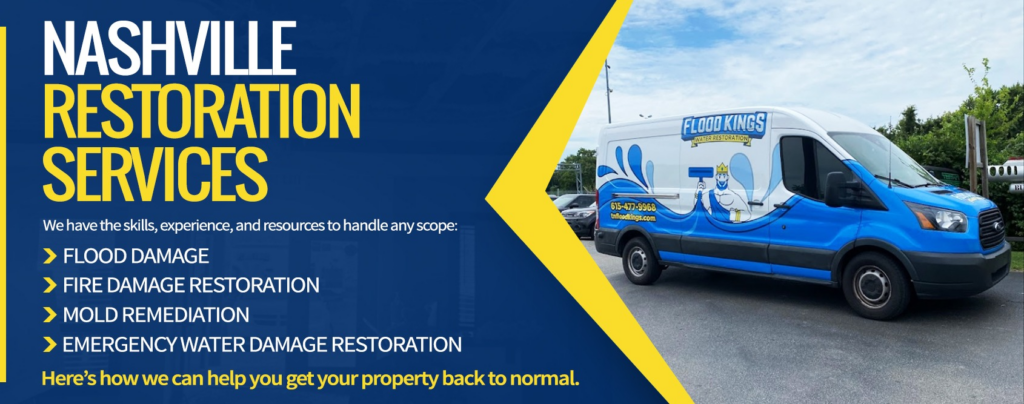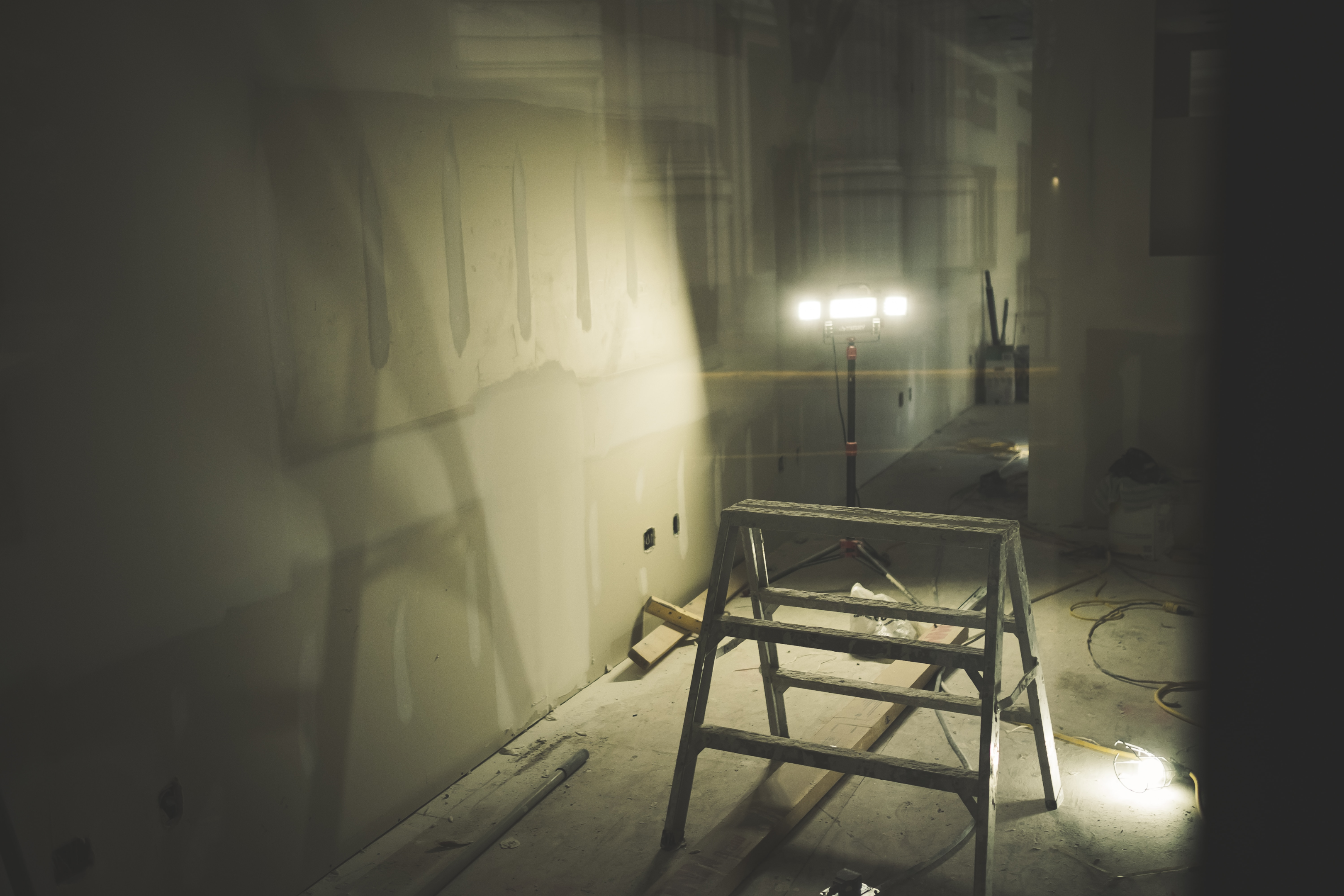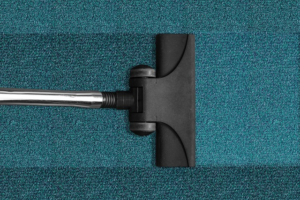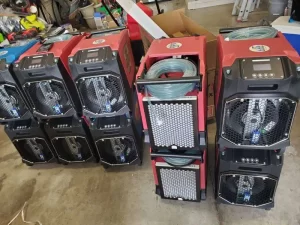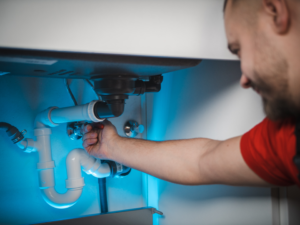Wet drywall can easily harbor dangerous mold spores, which could make you and your family sick. But can mold be removed from drywall, and what do you do if you find a suspicious spot? First, in this article, we’ll teach you how to identify mold in drywall and how to remove drywall mold so you know when to call TN Flood Kings for help.
Problems Associated With Mold Growth on Drywall
No matter where it grows, indoor mold is a serious issue. It can cause major respiratory issues, especially for vulnerable individuals, and it also endangers the structural integrity of your home if left unchecked. Because mold eats organic material, it will slowly gnaw away at drywall and then start on the actual timbers of the home, which could lead to incredibly expensive repairs.
How to Know if You Have Mold on Your Drywall
While drywall mold can quietly brew below the surface, there are characteristic signs that can help you identify the problem. Look for these troubling traits when identifying mold on drywall:
- Musty smells
- Damp patches on the drywall
- Soft drywall
- Splotches or dots of green, orange, black, gray, white, or brown
- Water stains
- Beads of moisture
If you find mold on your drywall, don’t feel like you have to go through this alone. We’ve removed mold from drywall in hundreds of Middle Tennessee homes, following industry standard safety methods and using the most advanced equipment.
Whether it’s one patch in a bathroom or an entire floor, we’re experts at removing mold wherever it lurks. We can identify the cause of the mold, treat the infestation, replace damaged materials, and get your home looking good as new!
Call us 24/7 for a free consultation, where we’ll create a plan of attack for removing mold and restoring your home’s functionality. We work with most major insurance carriers and will bill directly to your insurance if your water damage is eligible for an insurance claim.
Can You Salvage Mold-Affected Drywall?
Here’s the bad news first: any moldy area on your drywall needs to be completely removed. This is because drywall is a relatively porous material, which means that a mold colony can infest the entire area and continually release spores that endanger your health.
However, the rest of your wall is safe as long as it doesn’t have any mold spots. It’s also pretty easy to cut away the affected area and replace it with new material.
How to Remove and Replace Moldy Drywall
If you’re only fixing a small area of unpainted drywall, this will only take a few hours. For more extensive mold on drywall (more than 10 square feet), it’s best to call a mold remediation specialist like TN Flood Kings to assist you.
Gather Tools and Materials
For this mold-busting project, you’ll need the following:
Tools
- Protective gear: rubber gloves, safety goggles, N95 mask, and protective suit
- Scrub brush, toothbrush, or scrubber sponge
- Spray bottle
- Vacuum with HEPA filter
- Fan
- Stud finder
- Utility knife
- Tape measure
- Putty knife
Materials
- Mold spray
- Mold sealant
- Plastic sheeting
- Sandpaper
- Drywall screws
- Painter’s tape
- Garbage bags
- Drywall compound
- Drywall
- New insulation
Secure the Area
When you’re removing mold from drywall, it’s vital that you isolate the area. It’s particularly important that you shut the door, turn off the air conditioner, and seal the vents in the room so that you don’t get mold growth in your HVAC system, which would need help from TN Flood Kings to remediate. You can do this by cutting plastic sheets and placing them around the vents, then sealing them into place with painter’s tape.
For safety reasons, you will also want to turn off electricity and water in the affected area. Open up a window if possible, and start a fan going to help blow mold out of the window.
Prep Your Workspace
Lay down the plastic sheeting under the area where you will be cutting the drywall and put on your protective gear: goggles, gloves, and mask. While a protective suit isn’t strictly necessary, it will prevent you from carrying mold into the rest of the house when you leave the room.
Even if you wear a suit, wash your clothes as soon as you’re done to ensure that they’re not contaminated.
Clean the Surface Mold From Drywall
Even though you’re going to remove all the moldy drywall, you will want to kill as much surface mold as possible. Use a mixture of water, baking soda, and vinegar in a spray bottle, or purchase a mold spray from the store.
Don’t completely saturate the affected area, as any excess moisture will feed rather than kill mold. Spray once or twice, let sit for a moment, and then wipe away the excess.
Let the area completely dry before continuing with the next step. If necessary, you can start this process in the evening and let it sit overnight, just to be sure.
Find the Stud and Cut a Square
Using the stud finder, identify the studs and mark them so that you can screw in the new drywall here. You are going to cut the drywall from stud to stud, even if the area is smaller.
Take the tape measure and demarcate all the areas you are going to cut. Include every place where you noted the surface mold, as well as a buffer zone above and below, to be sure that you have caught everything.
With a utility knife, score across the lines and pop out the old drywall. Go slow and be gentle here so that you don’t cut too deep.
While it’s tempting to use a saw, as it would be faster, this can send mold flying everywhere, and it’s easy to accidentally cut something important, like wiring. While a utility knife takes a bit longer, it’s worth it to prevent further damage to your home.
Check and Seal Behind the Drywall
Take a flashlight and check the wood to see if you notice any surface mold or signs of decay. If you do, you should call in a mold remediation company, as removing mold from the structural components of the home can be costly and dangerous.
If you don’t see anything, treat the area with mold sealant just to be entirely sure that none grows, then move on to the next step.
Cut and Install the New Piece of Drywall
Use the utility knife to cut out a new piece in the correct size. Now, place it into the appropriate space and drive the drywall screws into the studs.
Depending on what type of drywall screws you use, you may just be able to tap them in or use a screwdriver, but always follow the manufacturer’s instructions.
Apply the drywall compound with a putty knife and let dry, then sand down to level. You can now apply a mold sealant to the area and get ready to throw away the contaminated materials.
Dispose of Old Drywall and Clean the Area
Wrap up all the old drywall in garbage bags so that mold can’t float out. You may need to cut it down so that it entirely fits into a contractor’s bag. As when you were originally cutting, be slow and gentle so that you don’t send mold particles afloat.
Wash all your tools with hot water and dish soap so that all the mold is destroyed, then let them thoroughly dry.
Clean With HEPA-Filter Vacuum
Finally, vacuum the entire room with a vacuum that has a HEPA filter to capture any remaining mold. It’s a good idea to dispose of the HEPA filter after this so that you can be assured that no drywall mold hangs around.
Once you’re finished, throw your clothes in the washing machine, take a shower, and congratulate yourself on a job well done!
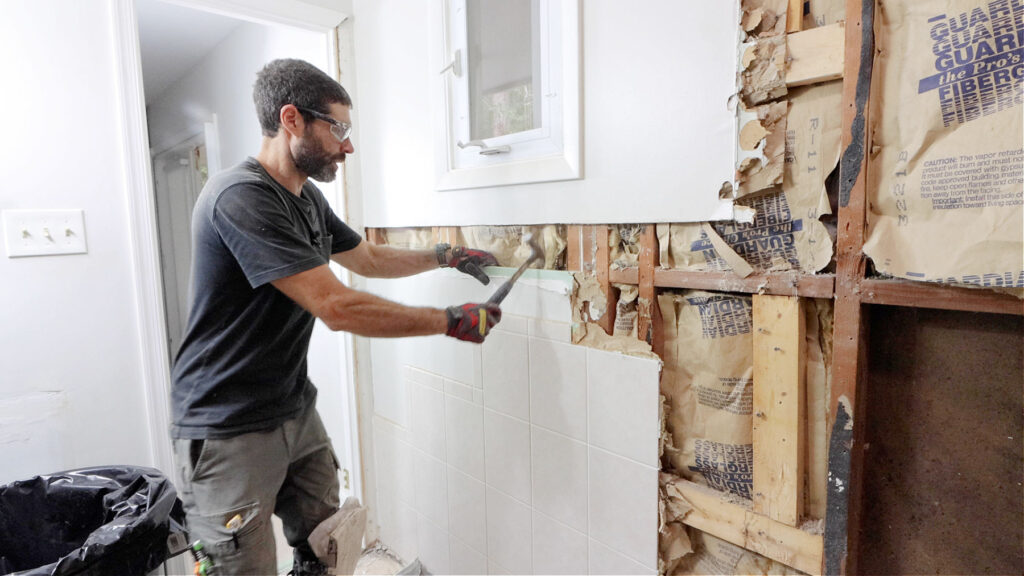
How to Remove Mold From Painted Drywall
The process for removing mold from painted drywall is very similar to that for unpainted walls, except you will not be removing any of the drywall.
Prep the Area
Wear protective gear, including safety goggles and gloves, as you lay down sheeting. As before, turn off the air conditioner so that you don’t contaminate the rest of the house with airborne mold.
Clean With Soap and Water
While dish soap won’t kill mold, it will remove any dirt or debris from the area so that you can more easily remove mold from the paint. Don’t saturate the area, as you don’t want to provide the mold with any more moisture than necessary.
Spray With Cleaning Solution
Fill a spray bottle with baking soda, vinegar, and water and spritz the area. Again, you don’t want to drench the surface; just get it damp enough that you can start to clean mold off the surface. Use a scrub brush to scrub away the spot.
Dry the Area
It’s essential that you get the drywall as dry as possible afterward; otherwise, you’ll have invited even more mold into the surface. Open up the windows and aim a fan at the affected area until it feels dry, then for a bit longer. You really can’t overdo it with this step.
Remove Affected Materials and Clean All Tools
Thoroughly wash everything you used to remove mold; you may wish to soak them in the same solution of vinegar and baking soda just to be sure that everything’s gone. Dry your implements thoroughly, then throw away any mold-infested materials.
Repaint if Necessary
Once you’re sure that everything is completely dry, apply a mold primer like Killz, then repaint it so that it matches the rest of the drywall.
How to Prevent Mold on Drywall
Trying to kill mold is not just annoying: it’s also dangerous. That’s why it’s important that you not allow this pest to get a foothold in your home by following these basic mold precautions – and calling TN Flood Kings fast if you identify a problem.
Keep Humidity Low
While there’s little research on exactly how much humidity encourages drywall mold, a good rule of thumb is to keep humidity relatively low. Numbers on exactly how low vary, but the Environmental Protection Agency recommends between 30-50%.
Set up dehumidifiers in areas that tend to get a little damper, such as bathrooms, kitchens, laundry rooms, and basements.
To ensure that you’re staying at optimum humidity levels, invest in a hygrometer, which you can purchase at a local hardware store.
Encourage Good Air Circulation
Good ventilation means good evaporation, which discourages mold. Invest in fans in bathrooms, kitchens, and other high-humidity areas, along with the dehumidifiers. This also keeps your home cool at a lower cost than running the air conditioner all the time!
Use HEPA Filters
HEPA filters in an air purifier are amazing at removing mold: they trap over 99% of mold particles, which ensures that they can’t land on your drywall and develop colonies. You don’t need an antimicrobial filter or UV lights on your air purifier, as the HEPA filter itself is enough.
Be sure to replace the filter regularly to prevent it from getting clogged.
Struggling With Mold on Drywall? TN Flood Kings Is Here to Help! Call 24/7 For a Free Estimate!
